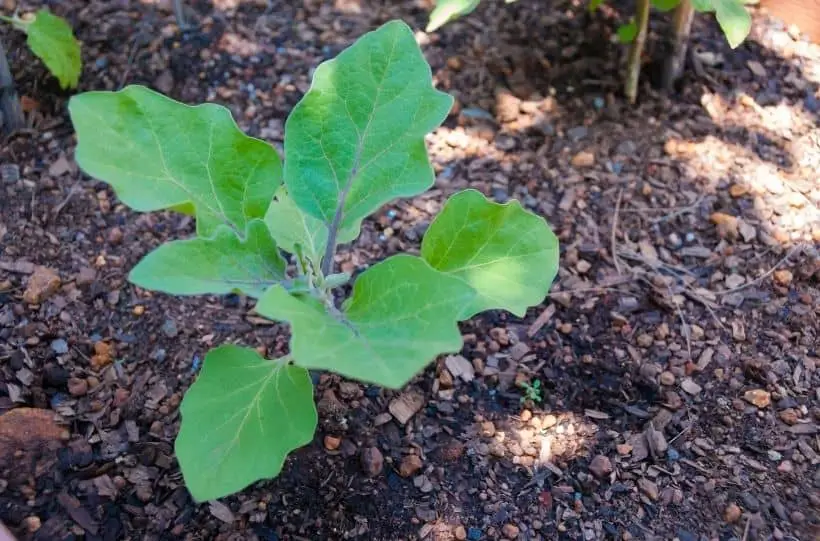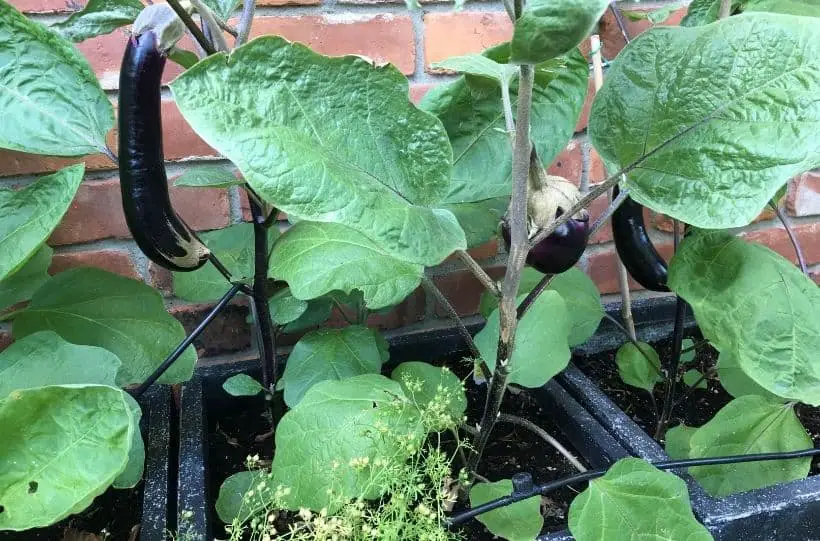How to Grow Eggplant
Eggplant is a common and useful addition to your garden. This summer take the time to add some eggplants to your garden to help provide your family with more nutrition-packed food.
Eggplant makes a great addition to your garden that is well worth the time and energy to grow. They grow well with other plants including peppers, potatoes, peas, green beans, and many popular herbs.
You may also hear it called a few different names, depending on where you are, including:
- Eggplant
- Aubergine
- Brinjal
Eggplant has many great uses and can even be used in place of meat in some of your favorite dishes to help you save money and eat more vegetables. Aubergine can be sliced thin and used as a pizza crust. Its uses are truly limited by your imagination and willingness to give something new a try.
And the deep purple color of eggplant skin is packed with antioxidants that are great for your health.

Planting eggplant
Before planting your eggplant you should take the time to till fresh compost a few inches into the soil to help nourish your plants as they grow. Eggplants are heavy feeders and giving them the best start possible is important to help them thrive.
Eggplants tend to grow very large and take up a lot of space. To make sure your eggplants have enough room to grow and thrive. Place them 24 to 36 inches apart.
If you are growing your eggplant in a square foot garden keep them 1 per square and pick shorter plants for the squares around them to leave plenty of room for the branches.

Starting eggplant from seed is easy and can be done indoors 4 to 6 weeks before the last frost. Start your seeds two per seed starter. After true leaves have formed you can then thin to one plant per container. Harden off your eggplant seedlings before you move your plants to your garden.
Caring for your Eggplant
Eggplant is fairly easy to care for. When growing eggplants you need to keep in mind that they are very heavy feeders and that you will need to make sure that the soil is well balanced. Start by adding plenty of fresh compost when you start your garden and fertilize your eggplant regularly.
Like other heavy-feeding plants, you may find that your eggplant shows signs of issues like blossom end rot if your plants are not provided enough nutrition.
If you see blossom end rot issues, test your soil PH levels and amend appropriately either adding in calcium or increasing the acid to make it easier for your plants to absorb calcium.
Eggplant, like peppers and tomatoes, requires a lot of direct sunlight to thrive. Plant your eggplant where they will get 6 to 8 hours of direct sunlight a day.
You can use companion planting things like pole beans behind your eggplants to reflect more light back at them to help provide them with more heat and sunlight.
Growing Eggplant in Containers
Many people do not realize that eggplants make a great addition to your container garden. While eggplant does require a very large pot for container gardening and well-nourished soil it tends to thrive and produce well.
A large container such as a 5-gallon bucket makes a wonderful container for eggplant. Be sure to add holes to the bottom for drainage. This prevents too much water from causing your eggplant’s roots to rot. To improve drainage even more break up some large sticks to line the bottom.
Mix plenty of compost into a quality potting soil mix to help this heavy feeder thrive. You want your soil to be well balanced with nutrition but still well-draining enough to have no issues with root rot.

Be sure to water your eggplants well as they tend to be very thirsty plants and containers tend to dry out fast. You can mulch your container garden to help trap moisture.
Dealing with Pests and Diseases in Your Eggplants
Eggplants tend to have issues with common pests like aphids. The best way to protect your eggplants is to companion plant them. Thyme, Mexican marigold, and french tarragon make great companion plants to help keep insects away from your plant.
Invite beneficial insects to your garden to help your plants thrive. You can do this by planting flowers that attract insects or building a bug house. Attracting hummingbirds to your garden is another great option.
Harvesting and Using Your Eggplant
Learning when to harvest eggplant can take a little work, even more so if you are not familiar with the variety you are growing. The size, color, and shape of ripe eggplant can vary between each variety.
Ripe eggplant has a thin and glossy skin. Similar to tomatoes the color can be an indication of ripeness.
The skin of the eggplant will turn glossy and dark when the fruit has ripened. The inside of a ripe eggplant is white with a firm texture with mature seeds. As you get to know your eggplant you can cut a few to see if they are ripe.
After a while, you will get to know exactly when they are ready for harvest.
The size of your eggplant can be directly affected by how long you leave them on the plant after they have reached the stage where they are edible. The longer they stay the more eggplant you will have to use.
If you intend to harvest seeds for later use you will need to leave some on the plant until full maturity.
And for more information, take a look at some of our other eggplant guides:
